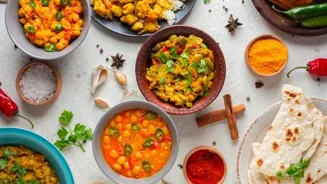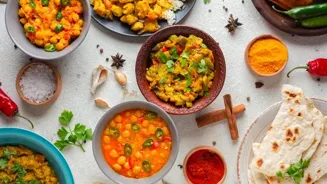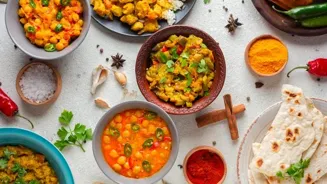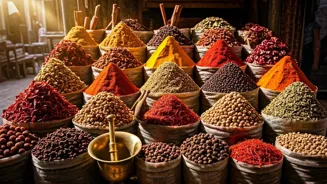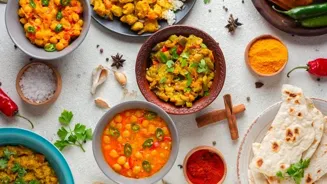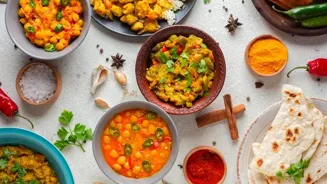Explore the diverse culinary landscape of India with 5 iconic dishes & their regional twists. Each bite tells a tale
India, a land of diverse cultures and traditions, boasts a culinary landscape as vibrant
and varied as its people. Each region has its unique spin on popular dishes, making the exploration of Indian food an exciting journey. Let's take a look at five iconic vegetarian dishes and their fascinating regional variations:
Sambar: A South Indian Staple with a Twist
Sambar, the tangy lentil-based vegetable stew, is a staple in South Indian households. What sets it apart is the use of tamarind, which gives it a distinct sour flavor. While the basic recipe remains consistent, each state puts its own spin on it.
In Tamil Nadu, sambar is often made with drumsticks and small onions, while in Karnataka, it tends to be slightly sweeter with the addition of jaggery. Andhra Pradesh's version is known for its spicy kick, thanks to the generous use of chilies. Kerala embraces coconut oil.
The ingredients for sambar often vary, depending on what's available locally. Some regions add potatoes and carrots, while others add white pumpkin. The type of lentil used can also change the flavor. Toor dal is standard, but some may add masoor or chana dal.
Similarly spices can be different in each region. Sambar powder is commonly used spice mix but the composition changes. The sambar powder may contains coriander seeds, fenugreek seeds, cumin seeds, red chilies, curry leaves.
Each family may have their own special recipe that's been passed down for generations. Eating it differently across states adds to the magic.
No matter where you try it, sambar is a delicious and wholesome dish that perfectly complements rice, idli, or dosa.
It’s a humble dish that exemplifies the beauty of Indian cuisine. Whether enjoyed for breakfast, lunch, or dinner, it is a culinary delight to be savored and relished. This is made from locally sourced ingredients and made with a unique experience. It’s loved by locals.
Khichdi: Comfort Food Reimagined Across India
Khichdi, often described as India’s ultimate comfort food, is a simple yet nourishing dish made from rice and lentils. Generally it is eaten when someone is sick. Its simplicity makes it easily adaptable to regional tastes. In Gujarat, khichdi is often cooked with vegetables, spices and yogurt.
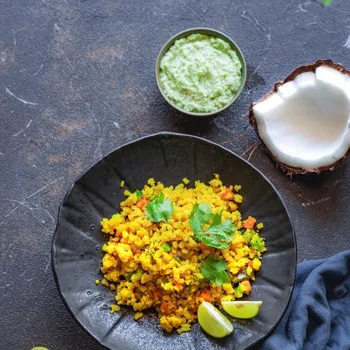
This gives it a creamy texture. Rajasthan's version is known for its use of millets instead of rice, making it a healthier alternative. In Bengal it is a must during monsoon for the weather. Moreover, it is a part of offering to the lord.
Some regions add spices like cumin, turmeric, and asafoetida. Others might add bay leaves or cloves. The type of lentil also varies. Some use moong dal, while others use toor dal or chana dal.
In some regions, khichdi is served with a dollop of ghee and papad; while in others, it’s enjoyed with yogurt and pickles. The simplest form of comfort is khichdi. It is often one of the first solid foods given to babies in India. It is easy to digest and provides essential nutrients.
It's a nutritious and fulfilling meal.
Khichdi is light and easy to digest, making it a popular meal for all ages. It's a reminder of the comforting flavors of home. It shows how simple ingredients can be transformed into something special. To be precise khichdi is comfort in a bowl.
It nourishes a body and soul. Whether you're feeling under the weather or simply craving a taste of home, khichdi never fails to deliver.
Ladoo: Sweet Spheres of Delight with Regional Flair
Ladoo, the quintessential Indian sweet, is a ball of deliciousness that comes in countless variations across the country. Motichoor ladoo, with its tiny, melt-in-your-mouth spheres, is a North Indian favorite.
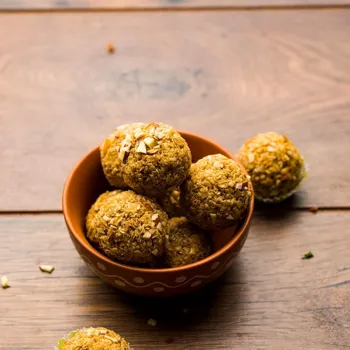
Besan ladoo, made from gram flour, roasted in ghee and sweetened with sugar, is popular throughout India. In South India, you have the Tirupati ladoo, a temple offering made with gram flour, sugar, ghee, cashews, raisins, and cardamom. Each region has its own twist.
The ingredients used can vary widely. Some ladoos are made with dry fruits, while others include nuts, seeds or coconut. The source of sweetness can also change. Some use regular sugar, while others use jaggery or condensed milk.
Some ladoos are flavored with cardamom, while others are scented with rosewater or saffron. It is often made during festivals and special occasions. The method of preparation can also differ; some ladoos are fried, while others are simply mixed and shaped.
They are offered to gods during pooja as well.
Ladoo are a symbol of celebration and good fortune. They can be found in almost every corner of the country. Whether you have a sweet tooth or not, you'll find a ladoo to love.
With their diverse flavors and textures, they are irresistible Indian sweets. It's a sweet way to experience India diverse culture. The unique versions reflects the regions taste preferences and ingredients.
Dosa: Crispy Crepes with a Regional Spin
Dosa, the crispy South Indian crepe is made from fermented batter of rice and lentils. It is a breakfast stable found all over the India. The basic recipe remains same, but regional versions offers different taste and experience.
In Tamil Nadu, you'll get the classic masala dosa, filled with a spiced potato mixture. In Karnataka, benne dosa is a must-try, a buttery and crispy delight. Ghee roast dosa is also common made crispy soaked and dipped in ghee. Each state has a unique and flavorful variations.
The filling of the dosa is often where the regional variations shine. Some dosas are filled with onions, tomatoes, and green chilies, while others contain paneer or cheese. Some are even stuffed with keema. The chutneys served alongside dosa also vary from region to region.
Coconut chutney, tomato chutney, and coriander chutney are popular choices. The cooking method can affect the taste and texture. Some dosas are cooked on a tava, while others are baked in an oven. It’s a delicious option for breakfast.
Dosa is an iconic Indian dish that's enjoyed across the country. Its versatility and deliciousness make it a popular choice for people of all ages. It's a testament to the creative culinary traditions of India. With its diverse flavors and fillings each bite is memorable.
Dosas are a culinary delight that reflect the rich and varied culture of each state.
Biryani: Aromatic Rice Dish with Regional Twists
Biryani, though often associated with non-vegetarian fare, has delicious vegetarian versions that vary significantly across regions. Hyderabadi Veg Biryani is known for its layered cooking style (dum) with aromatic spices, saffron, and vegetables.
Lucknowi Veg Biryani is milder in spices and emphasizes the fragrance of rosewater and kewra. In Kerala, vegetable biryani often incorporates coconut milk contributing a unique tropical sweetness.
The type of rice used in biryani impacts the texture and flavor.
Basmati is commonly used to retain it’s texture. The spices and vegetables may vary as per region. The cooking method is different which provides a unique flavor. Some regions steam the biryani, while others bake it in an oven. Raita is a very common accompaniment served with Biryani.
The variations in spices, vegetables, and cooking methods gives a distinct flavor profile.
Biryani is a celebration of flavors and aromas, be it the vegetarian version. It's a dish that brings people together and creates lasting memories.
Whether a casual family dinner or a grand celebration, Biryani is always welcomed joyously. The different regional takes adds to the dish’s versatility. It’s an experience that brings people joy. This food is always remembered.
AI Generated Content. Glance/InMobi shall have no liability for the content